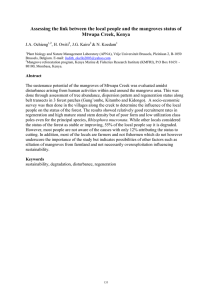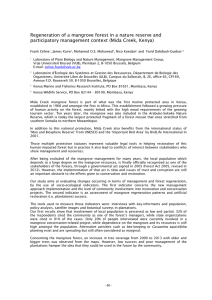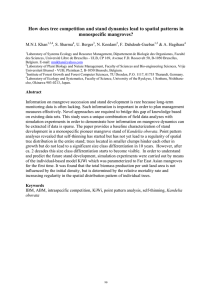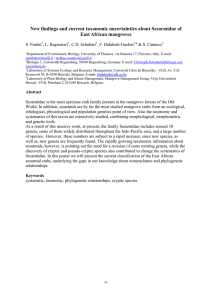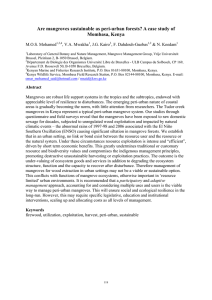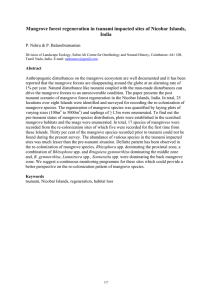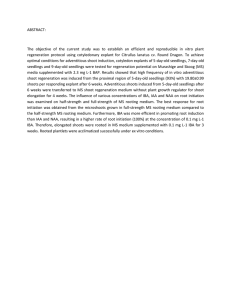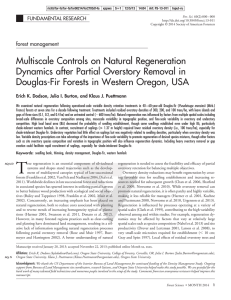Disturbances in a mangrove ecosystem - implications in the... recovery patterns and climate change
advertisement
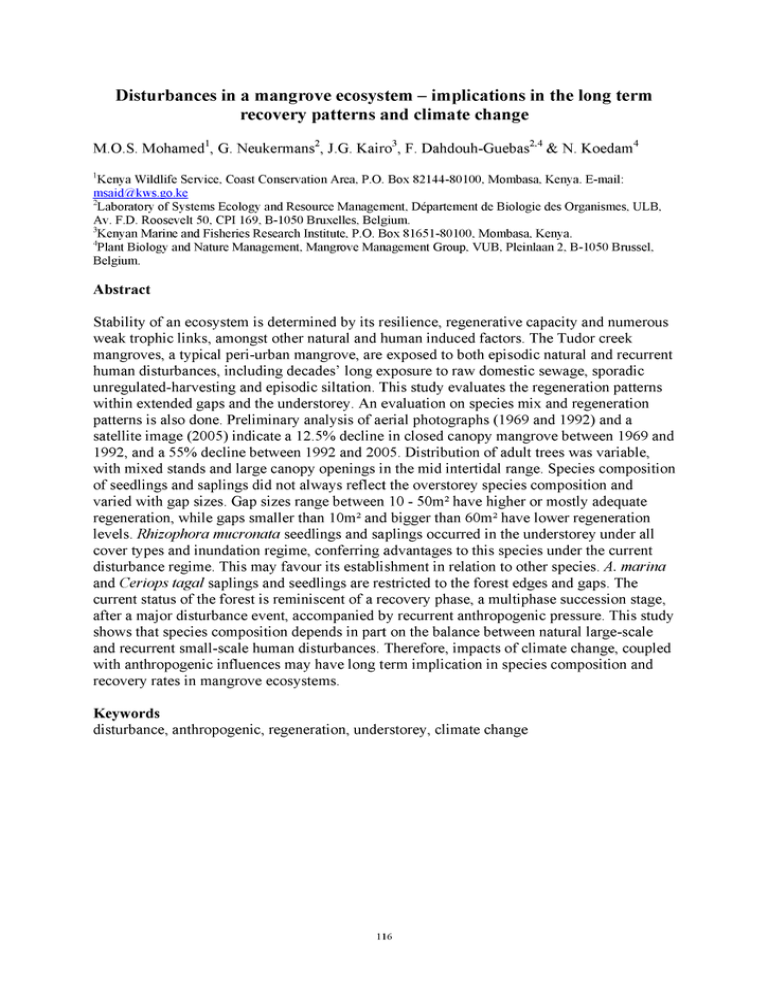
Disturbances in a mangrove ecosystem - implications in the long term recovery patterns and climate change M.O.S. Mohamed1, G. Neukermans2, J.G. Kairo3, F. Dahdouh-Guebas2'4 & N. Koedam4 'Kenya Wildlife Service, Coast Conservation Area, P.O. Box 82144-80100, Mombasa, Kenya. E-mail: msaidir/kws.ao ,ke lab o rato ry of Systems Ecology and Resource Management, Département de Biologie des Organismes, ULB, Av. F.D. Roosevelt 50, CPI 169, B-1050 Bruxelles, Belgium. 3Kenyan Marine and Fisheries Research Institute, P.O. Box 81651-80100, Mombasa, Kenya. 4Plant Biology and Nature Management, Mangrove Management Group, VUB, Pleinlaan 2, B-1050 Brussel, Belgium. Abstract Stability of an ecosystem is determined by its resilience, regenerative capacity and numerous weak trophic links, amongst other natural and human induced factors. The Tudor creek mangroves, a typical peri-urban mangrove, are exposed to both episodic natural and recurrent human disturbances, including decades’ long exposure to raw domestic sewage, sporadic unregulated-harvesting and episodic siltation. This study evaluates the regeneration patterns within extended gaps and the understorey. An evaluation on species mix and regeneration patterns is also done. Preliminary analysis of aerial photographs (1969 and 1992) and a satellite image (2005) indicate a 12.5% decline in closed canopy mangrove between 1969 and 1992, and a 55% decline between 1992 and 2005. Distribution of adult trees was variable, with mixed stands and large canopy openings in the mid intertidal range. Species composition of seedlings and saplings did not always reflect the overstorey species composition and varied with gap sizes. Gap sizes range between 10 - 50m2 have higher or mostly adequate regeneration, while gaps smaller than 10m2 and bigger than 60m2 have lower regeneration levels. Rhizophora mucronata seedlings and saplings occurred in the understorey under all cover types and inundation regime, conferring advantages to this species under the current disturbance regime. This may favour its establishment in relation to other species. A. marina and Ceriops tagal saplings and seedlings are restricted to the forest edges and gaps. The current status of the forest is reminiscent of a recovery phase, a multiphase succession stage, after a major disturbance event, accompanied by recurrent anthropogenic pressure. This study shows that species composition depends in part on the balance between natural large-scale and recurrent small-scale human disturbances. Therefore, impacts of climate change, coupled with anthropogenic influences may have long term implication in species composition and recovery rates in mangrove ecosystems. Keywords disturbance, anthropogenic, regeneration, understorey, climate change 116
